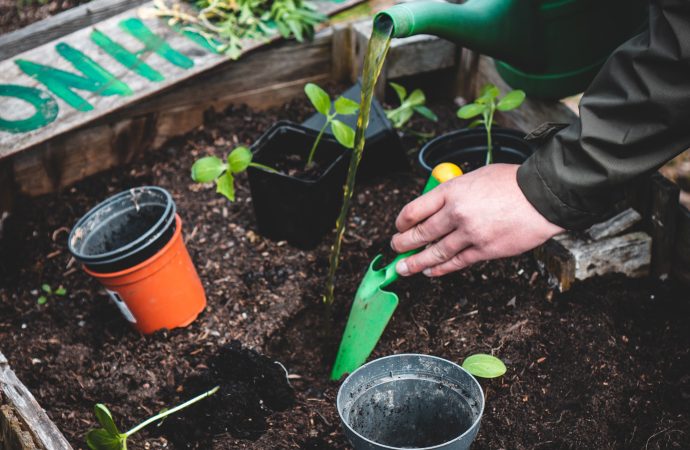Subtitle: Cultivating Fresh Flavors and Nurturing Culinary Creativity By [Your Name] Published on [Date] [City], [State] – In a world dominated by convenience and pre-packaged meals, a movement is blossoming, inviting individuals to reconnect with the earth and their own culinary creativity. “Garden-to-Table Gastronomy” is more than just a trend; it is a way of
Subtitle: Cultivating Fresh Flavors and Nurturing Culinary Creativity
By [Your Name] Published on [Date]
[City], [State] – In a world dominated by convenience and pre-packaged meals, a movement is blossoming, inviting individuals to reconnect with the earth and their own culinary creativity. “Garden-to-Table Gastronomy” is more than just a trend; it is a way of life that encourages people to cultivate their own gardens and savor the rewards by incorporating homegrown ingredients into their cooking. This movement not only enhances the flavors on our plates but also provides a sense of fulfillment and a deeper connection to nature.
As urbanization continues to rise and people become increasingly disconnected from the sources of their food, the importance of “Garden-to-Table Gastronomy” becomes even more evident. Growing your own food allows you to experience the entire process, from planting the seeds to harvesting the ripe produce. It is an immersive journey that reconnects us with the land and the seasonal cycles that shape our food.
One of the most compelling aspects of “Garden-to-Table Gastronomy” is the incredible variety of flavors that can be discovered when cooking with homegrown ingredients. From vibrant heirloom tomatoes bursting with juicy sweetness to aromatic herbs that perfume the air, the freshest produce elevates the simplest dishes to new heights. There is a profound joy in tasting the fruits of your labor, knowing that the flavors on your plate are a direct result of your dedication and care.
In addition to the enhanced flavors, cooking with homegrown ingredients sparks creativity in the kitchen. As individuals become more intimately acquainted with the unique characteristics of their garden’s offerings, they are inspired to experiment with new recipes and techniques. The culinary possibilities are endless when you have a bounty of fresh, seasonal ingredients at your fingertips.
Moreover, “Garden-to-Table Gastronomy” provides numerous health benefits. Homegrown produce is free from pesticides and chemicals commonly found in store-bought counterparts. It allows individuals to have complete control over what goes into their bodies, promoting a healthier lifestyle. Furthermore, the physical activity involved in gardening itself is a form of exercise that contributes to overall well-being.
The movement is not limited to rural areas or those with sprawling gardens. Urban dwellers are finding creative ways to grow their own food in limited spaces, such as rooftop gardens, vertical gardens, and community plots. These initiatives are bringing communities together, fostering a sense of shared responsibility for the environment, and promoting sustainable practices.
Critics argue that “Garden-to-Table Gastronomy” is a luxury that only a privileged few can afford. However, proponents of the movement highlight the cost-saving potential of growing your own food. While initial investments may be required for seeds, soil, and equipment, the long-term benefits far outweigh the costs. Moreover, organizations and local governments are recognizing the importance of supporting community gardens and providing resources to make gardening accessible to all.
In conclusion, “Garden-to-Table Gastronomy” is a captivating movement that goes beyond mere sustenance. It encourages individuals to reconnect with nature, cultivate their own gardens, and celebrate the joy of cooking with homegrown ingredients. Through the flavors, creativity, and health benefits it brings, this movement has the potential to transform the way we approach food and nourish ourselves. So, why not roll up your sleeves, dig into the earth, and embark on a culinary journey that begins right in your own backyard?
[Insert your closing statement or call-to-action.]
Disclaimer: The views and opinions expressed in this article are solely those of the author and do not necessarily reflect the official policy or position of any organization.

















Leave a Comment
Your email address will not be published. Required fields are marked with *